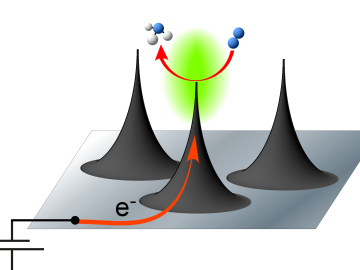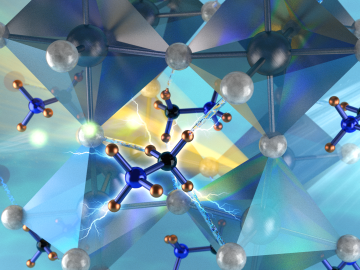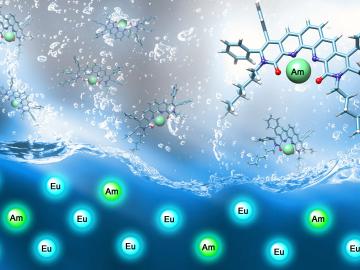
Filter News
Area of Research
- (-) Clean Energy (48)
- (-) Materials (52)
- Advanced Manufacturing (2)
- Biological Systems (2)
- Biology and Environment (4)
- Building Technologies (2)
- Climate and Environmental Systems (2)
- Computational Biology (1)
- Energy Frontier Research Centers (1)
- Fossil Energy (1)
- Fuel Cycle Science and Technology (1)
- Fusion Energy (1)
- National Security (2)
- Neutron Science (26)
- Nuclear Science and Technology (14)
- Nuclear Systems Modeling, Simulation and Validation (1)
- Sensors and Controls (2)
- Supercomputing (23)
News Topics
- 3-D Printing/Advanced Manufacturing (4)
- Bioenergy (2)
- Biology (1)
- Biomedical (3)
- Climate Change (1)
- Composites (2)
- Computer Science (2)
- Cybersecurity (1)
- Energy Storage (1)
- Environment (2)
- Fusion (1)
- Grid (3)
- Isotopes (5)
- Materials Science (7)
- Mercury (1)
- Microscopy (4)
- Nanotechnology (6)
- Neutron Science (3)
- Nuclear Energy (2)
- Physics (4)
- Polymers (3)
- Security (2)
- Space Exploration (2)
- Summit (1)
- Transportation (4)
Media Contacts
For the past six years, some 140 scientists from five institutions have traveled to the Arctic Circle and beyond to gather field data as part of the Department of Energy-sponsored NGEE Arctic project. This article gives insight into how scientists gather the measurements that inform t...


A shield assembly that protects an instrument measuring ion and electron fluxes for a NASA mission to touch the Sun was tested in extreme experimental environments at Oak Ridge National Laboratory—and passed with flying colors. Components aboard Parker Solar Probe, which will endure th...

Christina Forrester’s meticulous nature is a plus for her work leading technical testing and analysis of radiological and nuclear detection devices, whether that work takes her to the Desert Southwest or to her own lab outfitted with specialized



Oak Ridge National Laboratory today welcomed a second group of technology innovators to join Innovation Crossroads, the Southeast’s only entrepreneurial research and development program based at a U.S. Department of Energy national laboratory. Selected through a me...


Leveraging his expertise in image processing, sensors, and machine learning, Vincent Paquit is devising a control system for additive manufacturing to produce 3D-printed parts that function as well as conventionally produced objects. Paquit’s research sits at the junction of manufacturing technol...

A scientific team led by the Department of Energy’s Oak Ridge National Laboratory has found a new way to take the local temperature of a material from an area about a billionth of a meter wide, or approximately 100,000 times thinner than a human hair. This discove...


